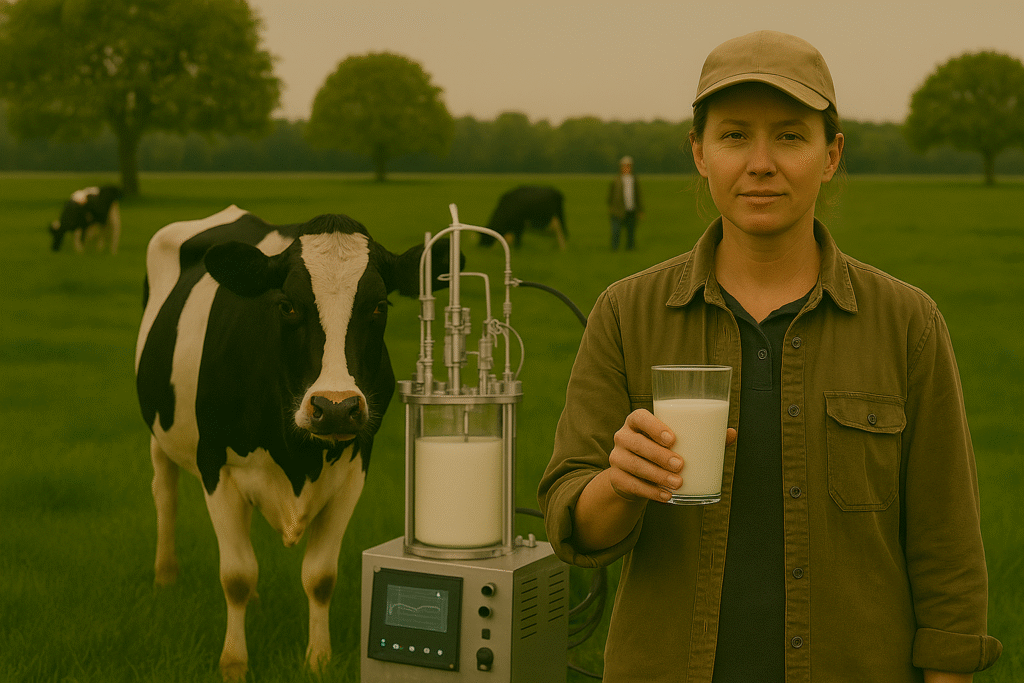
The Future of Dairy Products: From Grass-Fed to Lab-Grown Milk
Introduction: Why Dairy is Changing
When most people think of dairy, they imagine green fields, cows lying in the paddock chewing their gut and grazing peacefully, That image is still true in many parts of the world, but the future of dairy products looks very different.
Consumers are demanding healthier, more ethical, and more sustainable options. Science is pushing boundaries with plant-based milks, fermentation technologies, and even lab-grown dairy that doesn’t involve cows at all. Meanwhile, farmers face pressure to stay profitable with rising costs while adapting to shifting markets.
This article takes a deep dive into The Future of Dairy Products, exploring how grass-fed milk, plant-based alternatives, and lab-grown dairy will shape the industry—and what it means for city consumers and rural farmers alike.
Grass-Fed Dairy: Why It Still Matters
A Return to Tradition
Grass-fed dairy represents the “heritage” side of the industry. Cows eat what nature intended—grass—and farmers raise them with more space and lower grain inputs.
Health Benefits
Research shows grass-fed milk has:
- Higher levels of omega-3 fatty acids
- More conjugated linoleic acid (CLA), linked to heart health
- A different flavor profile often described as “creamier” or “richer”
Sustainability Benefits
Grass-fed systems can fit into regenerative farming models. By rotating pastures and avoiding heavy grain use, farmers improve soil health, increase biodiversity, and lower reliance on chemical fertilisers.
Why Consumers Still Want It
For rural families, it’s tradition and pride. For urban consumers, it’s about buying “authentic” milk they trust. Grass-fed will remain a premium segment in the future dairy market.
Alternative Proteins Enter the Scene
While grass-fed remains strong, the shelves in grocery stores tell another story: alternative proteins are booming.
Plant-Based Milks
- Oat, almond, soy, coconut, rice, and even potato milk are now common.
- Popular with health-conscious, vegan, and lactose-intolerant consumers.
- Criticised for being less nutrient-dense than real milk, but improving in taste and fortification.
Fermentation-Based Dairy Proteins
A new wave of companies uses precision fermentation to produce proteins like whey and casein—identical to cow proteins, but grown in tanks. These proteins can be used to make cheese, ice cream, and yoghurt that taste almost exactly like their dairy counterparts, without cows.
Lab-Grown Milk
The most futuristic development is cellular agriculture: producing milk directly from cow cells in a lab. This method promises milk without methane emissions or animal welfare issues. It’s still early, but prototypes are already being tested.
For city readers, this feels like the cutting edge of food technology. For country folks, it raises existential questions: What happens to dairy farming if milk no longer requires cows?
Consumer Trends Driving Change
The future of dairy products is shaped by consumer values. Here’s what’s driving demand:
- Sustainability: More shoppers want climate-friendly products.
- Health: Functional dairy (fortified, high-protein, low-sugar) is gaining traction.
- Animal Welfare: Younger generations, especially Gen Z, are willing to pay for cruelty-free options.
- Local Connection: Despite globalisation, many still prefer local farm milk for freshness and community pride.
This creates a split: one group seeks innovation and ethics, while another sticks with tradition and locality.
The Farmer’s Dilemma
For farmers, the dairy industry’s evolution feels both exciting and threatening.
Challenges
- Plant-based and lab-grown competitors
- Price pressure from large supermarkets
- Policy uncertainty on subsidies and carbon emissions
Opportunities
- Diversification: Farmers can move into artisan cheese, butter, and yoghurt markets.
- Collaboration: Some may partner with biotech companies to supply inputs for lab-grown dairy.
- Branding: “Grass-fed,” “organic,” and “local” remain powerful consumer draws.
For rural communities, this shift is about survival. Adapting to consumer demand could be the difference between thriving and closing down.
Dairy in 2035: Possible Scenarios
Looking ahead, the future of dairy products could take several forms:
- Premium Grass-Fed Market – Small farms focus on high-value artisanal products.
- Mainstream Lab-Grown Dairy – Big corporations mass-produce sustainable, cow-free milk.
- Hybrid Farming Models – Traditional dairy farms adopt bioreactors alongside barns.
- Explosion of Consumer Choice – Supermarkets carry everything from heritage cheddar to lab-based ice cream.
Cultural & Social Dimensions
For City Folks
Lab-grown and plant-based options reflect urban lifestyles—convenient, ethical, and climate-conscious.
For Rural Folks
Grass-fed and artisanal dairy reflect heritage, family pride, and authenticity.
The two worlds may seem opposed, but in reality, both will coexist. Consumers will demand both authenticity and innovation, depending on context.
The Role of Technology in the Future of Dairy Products
- Smart barns with automated feeding, milking robots, and renewable energy.
- Blockchain for traceability, ensuring consumers know exactly where milk comes from.
- Bioreactors and fermentation tanks potentially installed on farms, blending old and new.
Technology won’t replace farming—it will reshape it.
Final Thoughts: Bridging Past and Future
The story of The Future of Dairy Products isn’t one of replacement—it’s one of expansion. Grass-fed, artisanal milk will coexist with lab-grown dairy. Farmers who embrace both tradition and innovation will find ways to thrive.
For consumers, the future means more choice than ever before. From local raw milk to futuristic lab lattes, dairy is diversifying.
And that’s good news for everyone—city shoppers looking for sustainable, ethical food, and country farmers determined to keep their heritage alive while adapting to what’s next.
